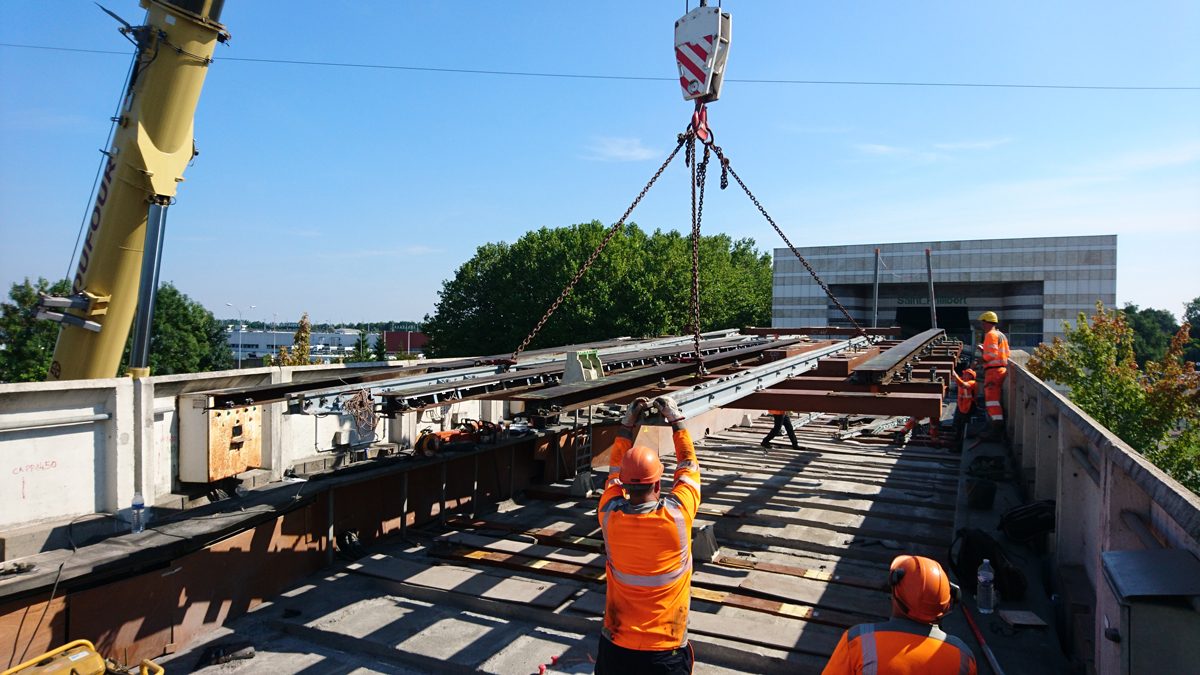In 2016, the switches at the slab track of the Lille Metro in France were renovated with the technology of FFU® synthetic wood. This was the second successful installed FFU synthetic sleepers project in France after renewing two switches at slab track in Toulouse 2015.
On the railway tracks of the Lille Metro (line 2), track elements rest on sleepers of azobé, a particularly heavy and hard type of wood. These switches were installed 30 years ago and over time the conditions of the timber sleepers degraded. Following these degradation, assessments were carried out, discovering a fungus which causes a rotting process. Therefore, Keolis Lille, a private provider of railway passenger transport, has carried out a renewal project for the replacement of two switches by using FFU synthetic sleepers from SEKISUI.
Synthetic sleepers comply with the safety characteristics of the manufacturer’s specifications and have the advantage of being able to be cut on site to ensure the installation of track equipment that has variable geometric constraints. The very long life and the excellent elastic material behaviour, combined with the high level of chemical resistance of FFU® synthetic wood, are crucial for its preferred use in switch systems, which are of high value to the operation of railways.
History and areas of application
FFU (Fibre Reinforced Foamed Urethane), a synthetic wood used as railway sleepers was developed by SEKISUI Chemical Co., Ltd. in cooperation with Japanese Railways in 1978. The initial point for developing this product made of long-lasting, durable and low-maintenance synthetic material was to guarantee a rail network capable of high performance with continuous and failure-free operation. In 1980, it was installed in two projects, a field trial on a bridge supporting structure as well as in a tunnel on the high-speed Shinkansen network. Since 1985 it is used as the standard railway sleeper of Japanese Railways. The installation of the first project in Europe was 2004 in Austria. Since then, FFU synthetic sleepers were installed on bridges and in switches in Europe in a sustainable manner. So far, more than 1,400 km of track worldwide have been laid with FFU® synthetic wood. The international standard ISO 12856-1 for plastic railway sleepers came into force in March 2014.
High-performance technology
FFU® synthetic wood is a perfect symbiosis between wood and plastic, combining the advantages of both materials. Continuous glass fibres and polyurethane are combined into a high quality and long life material. It has the life expectancy of high quality plastic and the weight of natural wood and can be worked like natural wood. The idea behind this was to devise a synthetic material featuring the same properties as natural wood, plus an extended life-span and resistance to weathering. FFU® synthetic wood is produced by compressing single strands of glass fibre with polyurethane foam using a high pressure extraction press. It has a closed cell structure, so it does not absorb any water. Moreover, this synthetic wood doesn’t need to be impregnated with environmentally harmful chemicals, while still being resistant against chemical contamination. The durability of FFU® synthetic wood is much higher than that of natural wood. FFU synthetic sleepers have an expected service life of more than 50 years.







